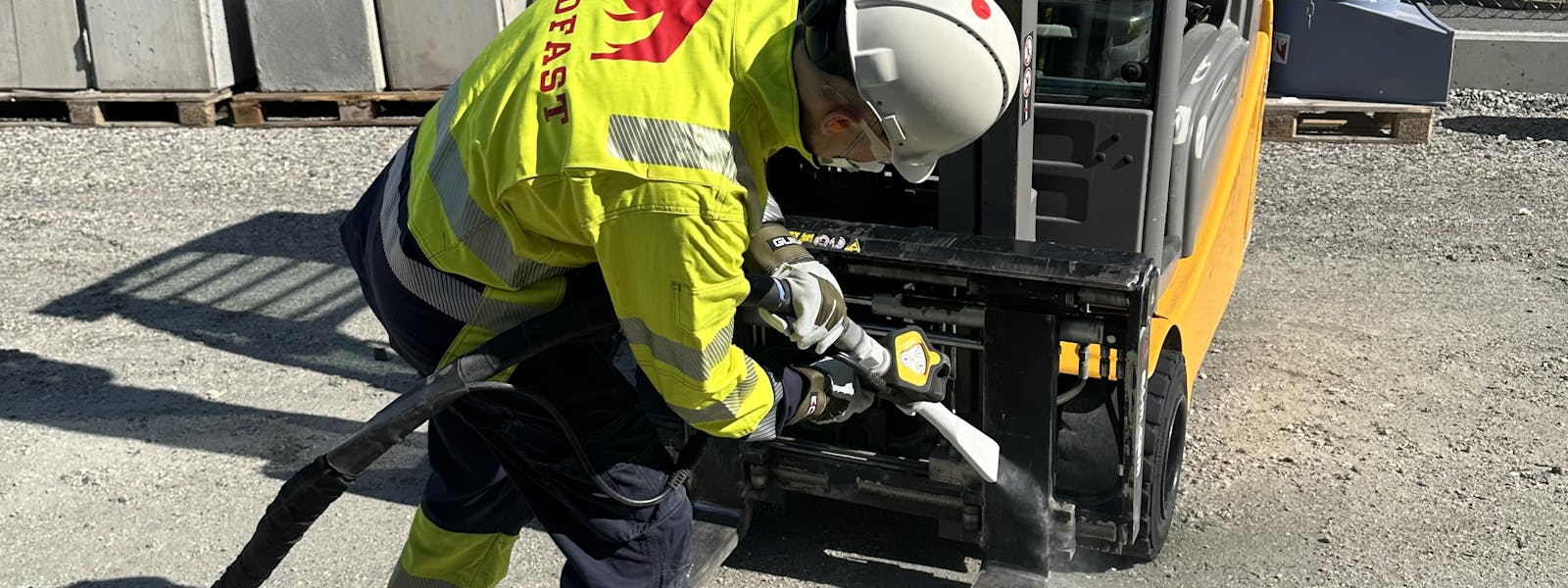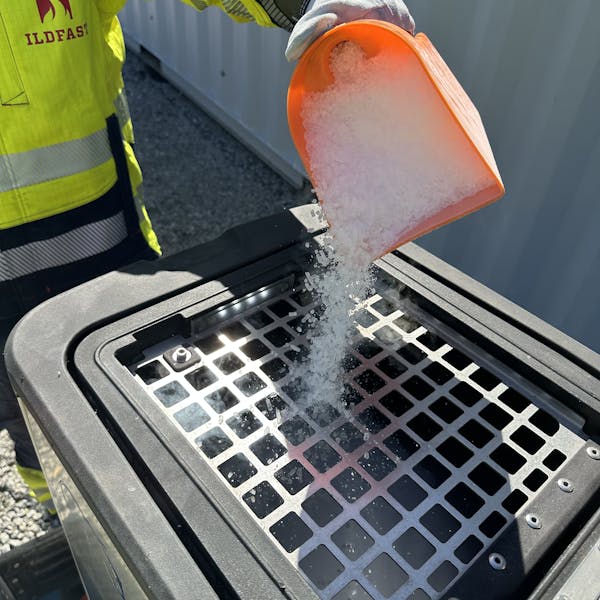
Totally clean without water or chemicals.
It is well known that sandblasting produces a lot of pollution and special waste. However, there is an alternative cleaning method that does not use water, sand or chemicals, and that is effective, gentle and environmentally friendly: dry-ice blasting.
“Dry-ice blasting is similar to sandblasting, except that the blasting agent you use for the actual cleaning evaporates and disappears instead of becoming special waste,” explains Marius Østlie, Managing Director of Ildfast AS. Ildfast is a support and service company that specialises in the maintenance of heating installations, supplying refractory and insulating materials, anchoring systems and a number of specialist products to the industry.
“Dry-ice blasting is an effective method of cleaning without water, chemicals or other blasting agents, so you aren’t left with a contaminated product. It is both environmentally friendly and clean, which means it can be used in the food industry. It effectively disinfects – plus there is simply less mess,” he says.
Ildfast performs dry-ice blasting with first-class equipment from the market leader, Cold Jet. Their machines are very efficient and reliable, and they use less air and dry ice than other similar equipment currently on the market.
(Article continues after photo)


Photo: Marius Østlie, Managing Director and Partner at Ildfast AS.
Here’s how it works:
Dry ice is frozen carbon dioxide (CO2). For dry-ice blasting, small (3 mm) pellets of dry ice are used.
“Pellets of dry ice are added to a machine and then blown through a hose, leaving the nozzle at a temperature of -79 °C. Depending on what is to be cleaned, the particle size, pressure and quantity can be adjusted. The dry ice creates small explosions on impact, causing the dirt you want to remove to crack open and disappear. Thermal stress helps to make the surface coating brittle so that it cracks,” Østlie explains.
When the dry ice pellets hit a surface, they turn back into CO2 gas. This makes it possible to reach and clean areas that could normally only be cleaned by hand. By using different nozzles together with the right pressure, air volume and pellets, you can remove most contamination, including corrosion. Depending on the equipment, dry-ice blasting can be used on the vast majority of surfaces.
“The machines we use can in principle be used for anything from gently removing soot from paper or wallpaper without damaging it, to aggressive cleaning that’s more like sandblasting. The new and most efficient machines have an incredibly wide range of applications – for example, you can even use them on live electrical equipment,” says Østlie.
Effective and gentle cleaning without hazardous waste.
CO2 is in itself a form of pollution, but Cold Jet’s innovative technologies use recycled CO2 that does not add any additional environmental impact. And compared to other types of blast cleaning, pollution is next to nothing.
“If you use water, you will have to handle and dispose of process water, soot and the like, depending on what you are cleaning. Not having to deal with that is an environmental benefit of dry-ice blasting, in addition to avoiding downtime when cleaning machinery and production equipment,” says Østlie. He says that they primarily use dry-ice blasting on refractory installations.
“We typically use dry-ice blasting on projects for customers who have production facilities with heating installations and high temperatures, smelting furnaces and the like. In such cases, dry-ice blasting is used for everything from general cleaning of the heating system to directly on the production equipment, such as the tapping equipment at a smelter, or cleaning the control panels inside and out – really, everything from the toughest production equipment to more delicate switchgear.”
Dry ice has been used for the last 50 years in industries where efficient and gentle cleaning is required without the use of water, sand or chemicals.
“Dry-ice blasting is suitable for anyone who wants to avoid generating expensive-to-manage special waste, and eliminates downtime when maintaining machinery and production equipment,” Østlie concludes.